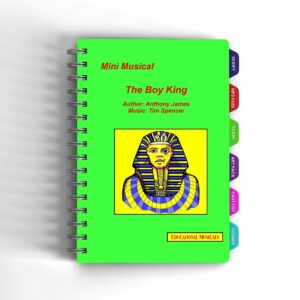Did you know who was the oldest ruling Pharaoh?
Pepy II holds the record for the longest reign of any pharaoh. He came to the throne when six years old, and he was still the King of Egypt at the grand old age of 94.
 How many Gods did they worship?
How many Gods did they worship?
Egyptians worshipped hundreds of gods over long periods of time.
Some gods changed over the years, while others were forgotten and then rediscovered.
Sometimes animals represented gods. The Jackal, Anubis, was the Protector of the Dead. The God of Wisdom, Thoth, and the Moon God, Khonssu, were represented by a baboon. Sobek had the head of a crocodile.
The origin of the Sphinx.
Confusion still exists as to the origin of the Sphinx, a huge carved lion with a human face, built around 4,500 years ago for the pharaoh Khafre and guarding the way to his pyramid. In Greek mythology she is a creature who kills men if they cannot solve the riddles she sets them. The lion body represents the Sun God, Re, and the face the power of the pharaoh!
 The End of the Pharaohs.
The End of the Pharaohs.
Egypt was invaded several times. One invader was the Greek warrior, Alexander the Great, who was followed by one of his generals, Ptolemy. Both these rulers founded a dynasty that ruled from Alexandria. Under them, Egypt began to worship Greek gods, but in the eyes of most Egyptians both leaders were thought of as pharaohs themselves.
Years later Rome also began to influence Egypt, eventually bringing Christianity with it. This lasted until the Seventh century A.D. when the Arab people invaded Egypt., with the result that today Egypt is a mainly Muslim country.
Our show
The Boy King – The Legend of Tutankhamun  tells the incredible story of the young ‘Boy King’ Tutankhamun who ruled all Egypt at the age of 9 yrs old!
tells the incredible story of the young ‘Boy King’ Tutankhamun who ruled all Egypt at the age of 9 yrs old!
Go to https://www.history-portal.com/show/the-boy-king-member-version/ to download it, your class could be rehearing it tomorrow.
Isn’t history fun?
10 questions to discuss:
- Beyond Pepy II, were there other long-reigning Pharaohs who shaped Egyptian history? If so, what were their significant contributions or achievements?
- How did the vast pantheon of Egyptian gods influence their daily lives and religious practices? Explore specific examples of gods, rituals, and their significance.
- What are some of the prevailing theories about the origins and purpose of the Great Sphinx? Discuss both historical and mythological interpretations.
- Beyond Alexander the Great and Ptolemy, were there other foreign rulers who significantly impacted Egypt during the Hellenistic period? How did their rule influence Egyptian culture and society?
- How did the transition from Greek gods to Christianity take place in Egypt? Were there any major conflicts or adaptations involved in this cultural and religious shift?
- What are some of the lasting legacies of the Pharaonic period in modern Egypt, beyond the pyramids and other monuments? Consider language, traditions, or cultural practices.
- How do archaeologists and historians utilize various resources to learn about the lives of the Pharaohs and their subjects? Explore the role of texts, artifacts, and even tombs in reconstructing the past.
- What are some of the ethical considerations involved in studying and potentially disturbing ancient Egyptian burial sites? Discuss the balance between preserving heritage and acquiring knowledge.
- How can the study of the Pharaonic period contribute to our understanding of broader human history and societal development? Consider themes of leadership, religion, art, and social structures.
- What are some of the challenges and opportunities in presenting the history of the Pharaohs to modern audiences, particularly young people? Consider educational tools, creative formats, and the importance of accessibility and inclusivity.
These questions invite deeper exploration and encourage critical thinking about various aspects of the Pharaonic period, its cultural nuances, and its lasting impact.
For more about the Ancient Eygiptians click on:
https://www.britannica.com/place/ancient-Egypt
https://education.nationalgeographic.org/resource/resource-library-ancient-egypt/
https://www.history.com/topics/ancient-egypt/ancient-egypt
1 lesson CLASSROOM ACTIVITY
EGYPTIAN HEADPIECE

1 – Cut a piece of cereal card into a strip that will fit around the head and stick together with masking tape. Do not overlap the card, but try to cut accurately to size.
2 – Take an A3 piece of black sugar paper and fold in half.
3 – Then fold this in half again.
4 – With scissors cut the piece of sugar paper into strips leaving a gap around three fingers thick from the top.
5 – Attach the sugar paper with masking tape to the card leaving a gap for the face.
6 – When completed cut out a small circle and two horns out of similar card to create the Horns of Ra.
Artwork ©Anthony James – Text © Tony Dalton


 How many Gods did they worship?
How many Gods did they worship? The End of the Pharaohs.
The End of the Pharaohs.